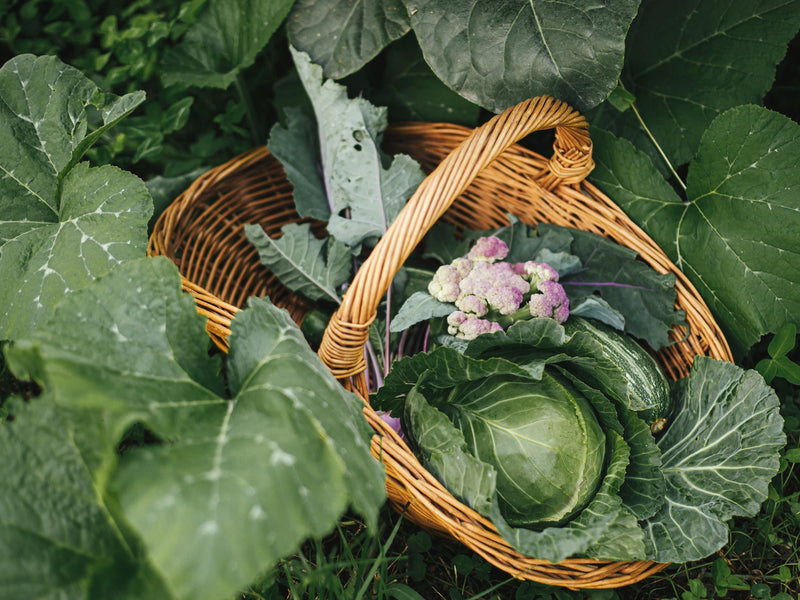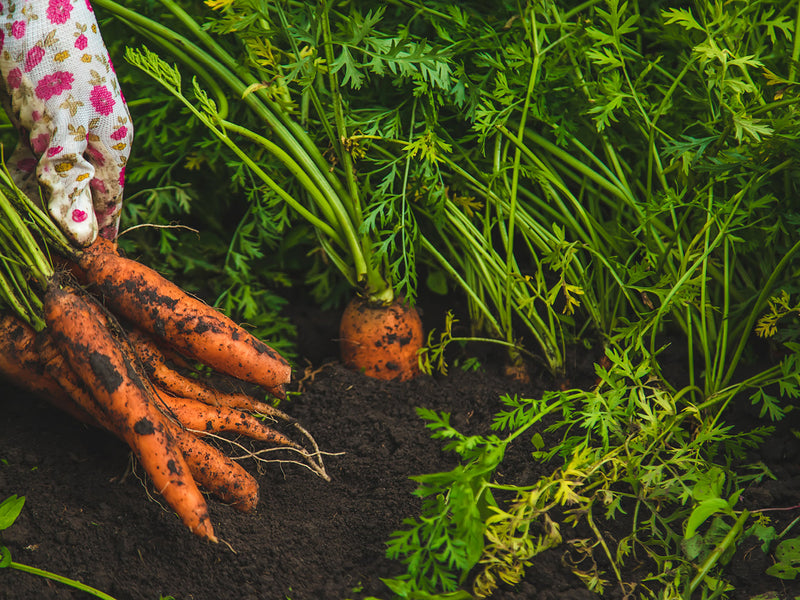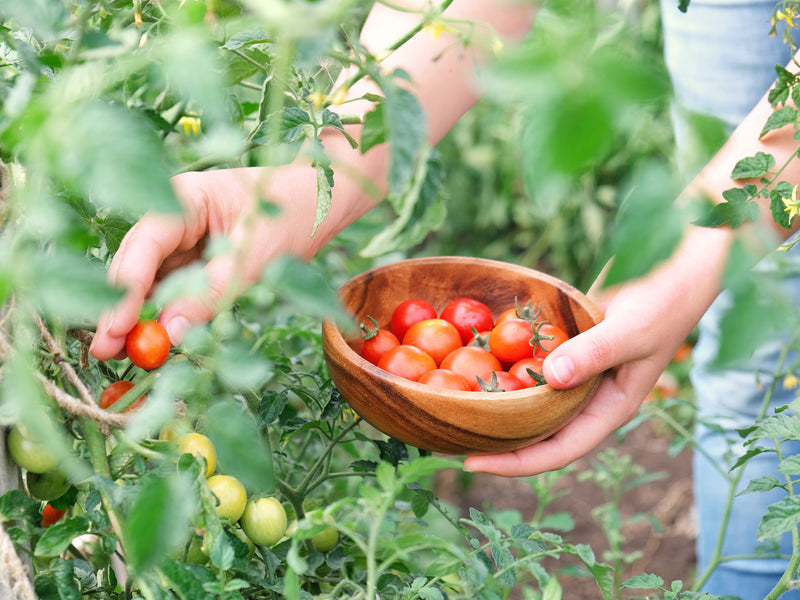Containers are a wonderful and easy way to grow fruits, vegetables and herbs.
Container gardening is great for:
- Limited outdoor growing space
- Being able to move plants to different locations, like frost sensitive plants indoors in the winter.
- Controlling your soil quality
- Adding variety to a garden space.
SIZE OF CONTAINER
It’s important to know the size your plant will be when mature so you can provide the right size container for it to grow in. Here are a few examples of minimum container sizes for types of vegetables, fruits and herbs:

EXTRA LARGE CONTAINER — 24” x 24” minimally
Blueberries
Dwarf fruit trees
Heirloom and Beefsteak Tomatoes
LARGE CONTAINER — 12”x12” minimally
Green Beans
Cherry Tomato
San Marzano Tomato
Kale
Large headed lettuces such as Romaine
Large carrot varieties
MEDIUM CONTAINER — 8” x 8” minimally
Medium carrot varieties
Medium headed lettuces such as butterhead and looseleaf
Spinach
Arugula
Cilantro
Sage
Thyme
Jalapeno
Green onion
SMALL CONTAINER — 6” x 6” minimally
Radishes
Small carrot varieties
Parsley
Basil
Medium and small headed lettuces
POTTING MIX
An easy and readily available planting medium for containers is an organic potting mix. This mix is typically lightweight, nutrient rich and holds moisture well.
You can also make your own potting mix. All ingredients listed below can easily be found at your local garden supply center.
HOME MADE POTTING MIX RECIPE:
1 part sphagnum peat moss or coir fiber
1 part vermiculite or perlite
1 part compost
1.5 TBSP lime per gallon of sphagnum peat moss. Skip this if using coir fiber. Peat moss is acidic and lime is needed to neutralize the acidity.
PLUS
Add 1 TBSP organic granular fertilizer per gallon of potting mix (our Organic Starter & Transplanter Fertilizer is excellent for new potting mixes).
WATER
Gardening in containers does mean closer monitoring of the moisture level in your soil. Whatever type of pot you choose be sure it has good drainage holes. Letting your soil get too wet can harm your plants.
Another thing to watch out for is pots quickly drying out on hot days. On such days your pots may need one to two waterings per day.
Do your best to keep soil consistency moist and avoid dry or overly wet soil.

LOCATION
Most vegetables and herbs like 6-8 hours of direct sunlight. Find a location that will expose them to the sunshine they need. Keep your container garden near your home or somewhere you frequent often so they can be regularly monitored. Make sure you have easy water access at the location you choose.
TEMPERATURE
Each vegetable thrives in certain temperatures. Many, like tomatoes and pepper grow in warm temperatures (65 degrees and above) and can’t handle cooler temperatures. Others like Kale, lettuce, and carrots do well growing in the spring and fall. Be sure to plant your container garden at the right time of year for the vegetables you intend to grow.
Should you start a little too early or have unexpected frost in the forecast, the beauty of container gardening is you can easily move your plants indoors to protect them from the elements!
INDOOR GARDENING
To extend the growing season for your plants, you may choose to bring your plants indoors in the wintertime. If growing indoors, be sure you have the right set up to keep your plants thriving! Check out this article: Indoor Gardening to learn how to set up the right indoor growing space.
Have fun creating your container garden!














